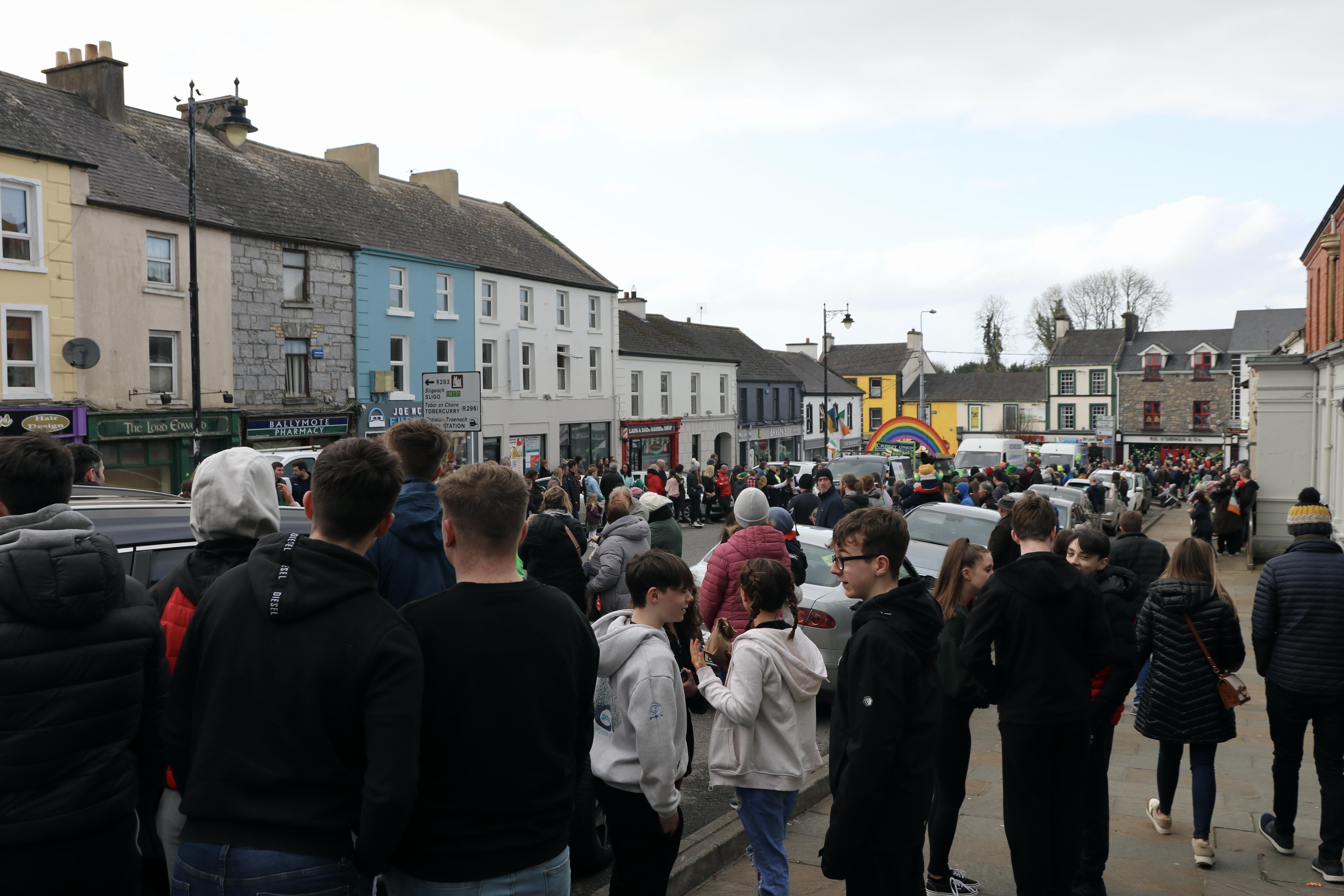|
Annraoi Ó Liatháin
Annraoí Ó Liatháin (15 October 1917 – 1981) was an Irish writer and film narrator. Early life Born in Portumna, County Galway to Michael Lyons and Annie McKee. His family moved to Waterford when he was a child, and he attended primary school there. On graduating, he spent five years as a novice with the Congregation of Christian Brothers in Tullow, County Carlow, and in Youghal. Career Having left the seminary, he entered the Irish Civil Service in 1936. After a period of time working at the Property Valuation Office, he moved into the dictionary team at the Department of Education (An Roinn Oideachais). During his career as a writer, he wrote exclusively in his native Irish language. He produced a number of novels aimed at teenagers, as well as collaborated on a number of books on the natural world. He was also president of Conradh na Gaeilge from 1952 to 1955. Personal life Ó Liatháin married Margaret Fox of Ballymote, County Sligo County Sligo ( , ) ... [...More Info...] [...Related Items...] OR: [Wikipedia] [Google] [Baidu] |
Irish Language
Irish (Standard Irish: ), also known as Irish Gaelic or simply Gaelic ( ), is a Celtic language of the Indo-European language family. It is a member of the Goidelic languages of the Insular Celtic sub branch of the family and is indigenous language, indigenous to the island of Ireland. It was the majority of the population's first language until the 19th century, when English (language), English gradually became dominant, particularly in the last decades of the century, in what is sometimes characterised as a result of linguistic imperialism. Today, Irish is still commonly spoken as a first language in Ireland's Gaeltacht regions, in which 2% of Ireland's population lived in 2022. The total number of people (aged 3 and over) in Ireland who declared they could speak Irish in April 2022 was 1,873,997, representing 40% of respondents, but of these, 472,887 said they never spoke it and a further 551,993 said they only spoke it within the education system. Linguistic analyses o ... [...More Info...] [...Related Items...] OR: [Wikipedia] [Google] [Baidu] |
1981 Deaths
Events January * January 1 ** Greece enters the European Economic Community, predecessor of the European Union. ** Palau becomes a self-governing territory. * January 6 – A funeral service is held in West Germany for Nazi Grand Admiral Karl Doenitz following his death on December 24. * January 10 – Salvadoran Civil War: The FMLN launches its first major offensive, gaining control of most of Morazán and Chalatenango departments. * January 15 – Pope John Paul II receives a delegation led by Polish Solidarity leader Lech Wałęsa at the Vatican. * January 20 – Iran releases the 52 Americans held for 444 days, minutes after Ronald Reagan is sworn in as the 40th President of the United States, ending the Iran hostage crisis. * January 21 – The first DeLorean automobile, a stainless steel sports car with gull-wing doors, rolls off the production line in Dunmurry, Northern Ireland. * January 24 – An earthquake of magnitude in Sichuan, China, kills 150 people. J ... [...More Info...] [...Related Items...] OR: [Wikipedia] [Google] [Baidu] |
1917 Births
Events Below, the events of World War I have the "WWI" prefix. January * January 9 – WWI – Battle of Rafa: The last substantial Ottoman Army garrison on the Sinai Peninsula is captured by the Egyptian Expeditionary Force's Desert Column. * January 10 – Imperial Trans-Antarctic Expedition: Seven survivors of the Ross Sea party are rescued after being stranded for several months. * January 11 – Unknown saboteurs set off the Kingsland Explosion at Kingsland (modern-day Lyndhurst, New Jersey), one of the events leading to United States involvement in WWI. * January 16 – The Danish West Indies is sold to the United States for $25 million (equivalent to $ million in ). * January 22 – WWI: United States President Woodrow Wilson calls for "peace without victory" in Germany. * January 25 – WWI: British armed merchantman is sunk by mines off Lough Swilly (Ireland), with the loss of 354 of the 475 aboard. * January 26 – The se ... [...More Info...] [...Related Items...] OR: [Wikipedia] [Google] [Baidu] |
County Sligo
County Sligo ( , ) is a Counties of Ireland, county in Republic of Ireland, Ireland. It is in the Northern and Western Region and is part of the Provinces of Ireland, province of Connacht. Sligo is the administrative capital and largest town in the county. Sligo County Council is the Local government in the Republic of Ireland, local authority for the county. The population of the county was 70,198 at the 2022 census of Ireland, 2022 census. It is noted for Benbulben Mountain, one of Ireland's most distinctive natural landmarks. History The county was officially formed in 1585 by Sir Henry Sidney, Lord Deputy of Ireland, but did not come into effect until the chaos of the Nine Years' War (Ireland), Nine Years' War ended, in 1603. Its boundaries reflect the Ó Conchobhair Sligigh confederation of Lower Connacht () as it was at the time of the Elizabethan conquest. This confederation consisted of the tuatha, or territories, of Cairbre Drom Cliabh, Cairbre Drumcliabh, Tír Fhíacr ... [...More Info...] [...Related Items...] OR: [Wikipedia] [Google] [Baidu] |
Ballymote
Ballymote () is a market town in southern County Sligo, Ireland. It is around 20 km south of Sligo town in the province of Connacht, which is in the north-west of Republic of Ireland, Ireland. Ballymote lies in the Barony (Ireland), barony of Corran (barony), Corran. It is a Commuting, commuter town with a strong history of independent enterprises along with firm local health, school, and transport services. Ballymote is on the main Dublin–Sligo railway line, Dublin to Sligo Train Line, and 10 minutes from the N4 road (Ireland), N4 / N17 road (Ireland), N17 roads. The town serves a large hinterland area in south east County Sligo. The Normans, Norman Ballymote Castle dates from the 1300s, and the Book of Ballymote was written in or near the town in the 1390s. History The origins of the settlement appear to have been derived from the 12th century Norman Castle, though evidence of earlier settlement and farming in area from 1000BC exists through the presence of ringforts, ... [...More Info...] [...Related Items...] OR: [Wikipedia] [Google] [Baidu] |
Conradh Na Gaeilge
(; historically known in English as the Gaelic League) is a social and cultural organisation which promotes the Irish language in Ireland and worldwide. The organisation was founded in 1893 with Douglas Hyde as its first president, when it emerged as the successor of several 19th century groups such as the Gaelic Union. The organisation was a spearhead of the Gaelic revival and of '' Gaeilgeoir'' activism. While Hyde succeeded in drawing unionists to the League, the organisation increasingly gave expression to the nationalist impulse behind the language revival. From 1915, members of its executive acknowledged the leadership of the Irish Republican Brotherhood in the struggle for Irish statehood. After the creation of the Irish Free State, and limited advances with respect to the teaching and official use of the language, many members transferred their commitment to the new institutions, political parties and education system. In 2008, Conradh na Gaeilge adopted a new constit ... [...More Info...] [...Related Items...] OR: [Wikipedia] [Google] [Baidu] |
Department Of Education (Ireland)
The Department of Education and Youth () is a department of the Government of Ireland. It is led by the Minister for Education and Youth. Departmental team The official headquarters and ministerial offices of the department are at Marlborough Street, Dublin. The departmental team consists of the following: * Minister for Education and Youth: Helen McEntee, TD ** Minister of State for special education and inclusion: Michael Moynihan, TD *Secretary General: Bernie McNally Overview Chief among the department's priorities are: *the promotion of equity and inclusion, quality outcomes and lifelong learning *planning for education that is relevant to personal, social, cultural and economic needs *enhancement of the capacity of the department for service delivery, policy formulation, research and evaluation History In the revolutionary period, the position was established in 1920 as the Minister for Irish. This was expanded as the Secretary for Education in the Government of t ... [...More Info...] [...Related Items...] OR: [Wikipedia] [Google] [Baidu] |
Portumna
Portumna (- meaning 'the landing place of the oak') is a market town in the south-east of County Galway, Ireland, on the border with and linked by a Portumna bridge, bridge to County Tipperary. The town is located to the west of the point where the River Shannon enters Lough Derg (Shannon), Lough Derg. This historic crossing point over the River Shannon between counties Tipperary and Galway has a long history of bridges and ferry crossings. On the south-western edge of the town lie Portumna Castle and Portumna forest park. History Portumna Bridge Portumna is served with a five-span road bridge over the Shannon. This was designed by C. E. Stanier of London, and completed in 1911, with a central section resting on Hayes's Island which divides the river into two channels. The steel structure of the main bridge and pivoting swing bridge over the navigation channel are of technical and engineering interest, and it is the largest early-twentieth-century swing bridge in Europe. The o ... [...More Info...] [...Related Items...] OR: [Wikipedia] [Google] [Baidu] |
Irish Civil Service
The Civil service () of the Republic of Ireland is the collective term for the permanent staff of the departments of state and certain state agencies who advise and work for the Government of Ireland. It consists of two broad components, the ''Civil service of the Government'' and the ''Civil service of the State''. Whilst the differences between these two components are largely theoretical, some fundamental operational distinctions exist. Development The civil service of the Irish Free State was not formally established by any specific legislation. The Anglo-Irish Treaty of 1921 did however provide that the Government of the Irish Free State became responsible for those who were discharged or retired from the civil or public services in the new state, except a few exempted personnel recruited in response of the Anglo-Irish War. The exact status and compensation of such people was further codified in law by thCivil Service (Transferred Officers) Compensation Act 1929 This had t ... [...More Info...] [...Related Items...] OR: [Wikipedia] [Google] [Baidu] |




